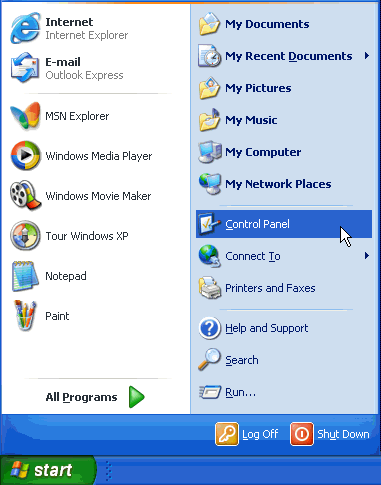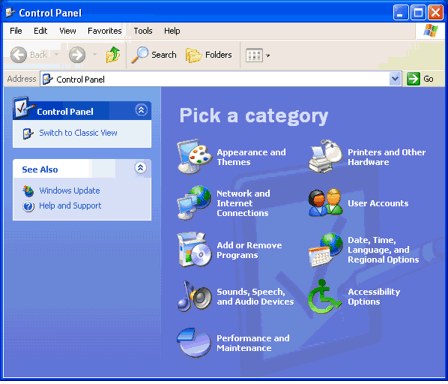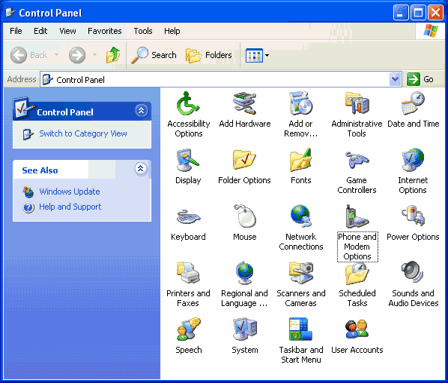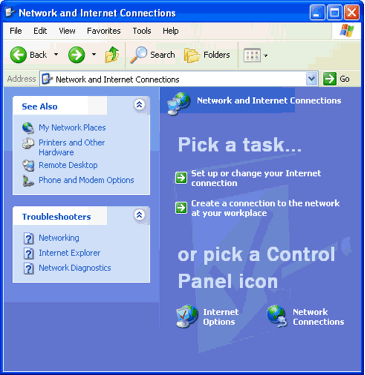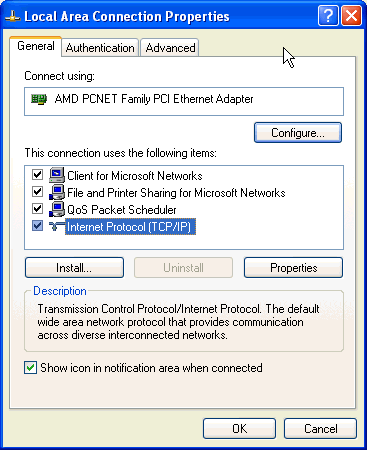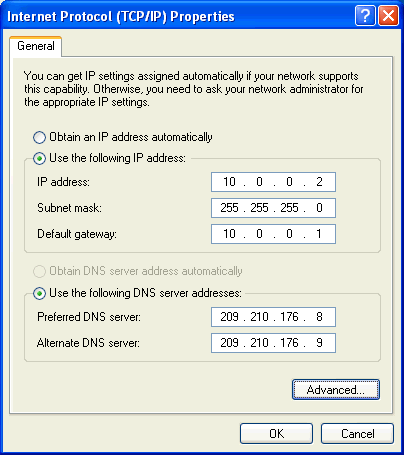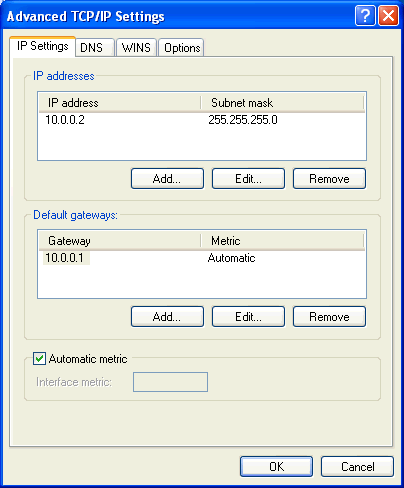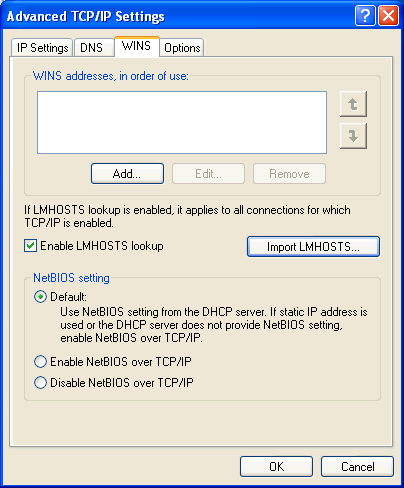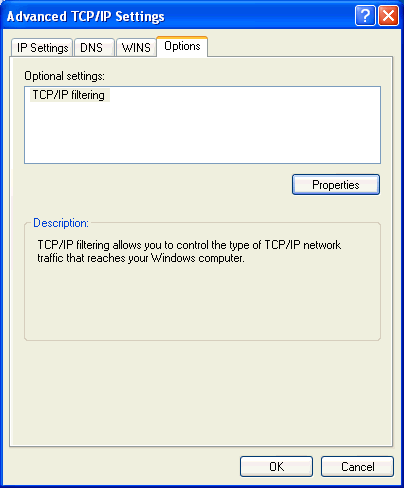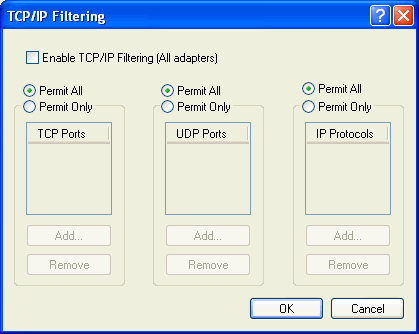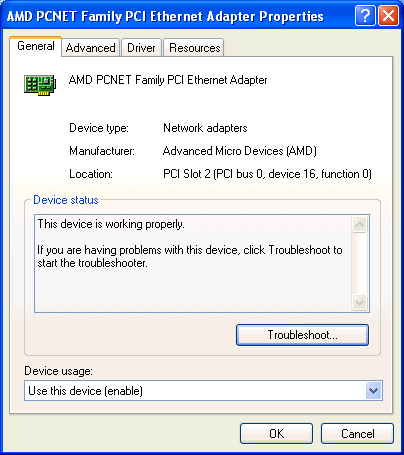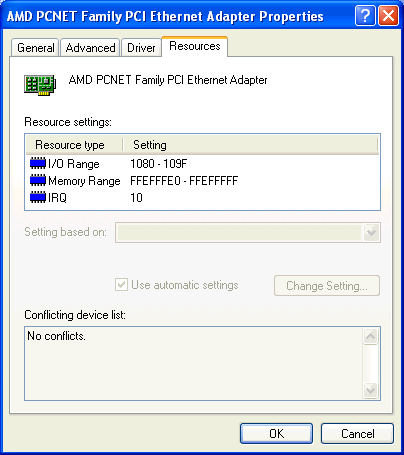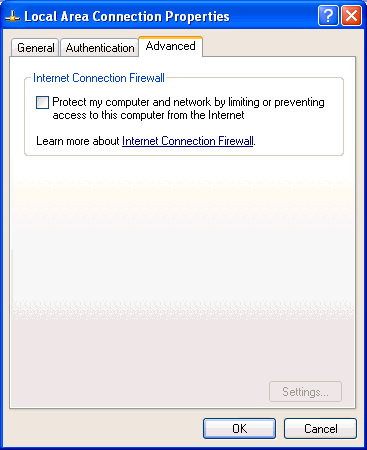|
|

|
|
|
Windows XP Dial-Up Modem & Control Panel Configurations Quick Links: Connection Wizard | Existing Connection | Control Panel: Phone & Modem | System Restore | Links on this page: General tab | General tab: TCP/IP Properties | General tab: Adapter Properties | Authentication tab | Advanced tab |
Checking a LAN/Broadband Connection: If you have a Broadband connection, such as DSL, or a Local Area Network, you may need to change some settings in your Local Area connection. Click the Start button and select Control Panel as pictured below.
Windows XP gives you the option to view the Control Panel in
"Category View" or "Classic View".
If the Properties option is grayed out on the pop-up menu, you are not logged in as an Administrator. You will need to log-off your computer and log back on as either (1) Administrator or (2) any other user account you have set up on your PC with Administrative rights.
The first tab to appear in the Local Area Connection Properties is the General tab.
The Connect using section refers to your network adapter. This may be an Ethernet card that connects to an external DSL or ISDN Router. Or, this may be a DSL modem connected to your computer's USB port. Click on Configure to run a diagnostic, check for device conflicts, or update driver software. Screen shots for this are located further down the page. The second section lists services and protocols used by this connection. The most important is Internet Protocol (TCP/IP). This topic is covered next.
General Tab: TCP/IP Properties: In the Local Area Connection Properties double-click Internet Protocol (TCP/IP) to view and modify IP, DNS, and Gateway settings.
The IP address is the address of your computer on the Internet (or on your home network). If your DSL provider has given you an IP address, click Use the following IP address and enter it. This address may actually be assigned to your DSL router instead of your computer. In this case, you need to use a different IP address on your computer. The example above shows the most commonly used IP address for this purpose: 10.0.0.2. Consult your DSL Router's documentation for the correct settings. Some common DNS numbers for DSL and ISDN providers are 209.210.176.8 and 209.210.176.9 Once this information is entered, click "OK". For more options, click the Advanced button to see the screen below.
Contact your ISP for the IP Address of the Gateway. For most installations, only one IP address and Gateway are used. Some offices may use more than one, but your Network Administrator would take care of these settings.
Extra DNS numbers can be added on the DNS tab. Since most ISP's only use two, you will likely leave these settings alone.
The WINS tab is rarely used for an Internet connection. One exception might be VPN connections to your work. Your Network Administrator would set this up for you.
The last tab, the Options tab, has additional features you probably won't want to use. TCP/IP filtering is installed by default, and acts as a firewall to protect your computer. Click Properties to apply special filters to your computer.
It is best to leave these settings alone, since they are extremely tricky and do not always work properly on Windows XP. Many virus protection software suites come with Firewall software that provides a much more effective alternative.
General Tab: Adapter Properties: Click on Configure on the General tab of the Local Area Connection dialogue to run a diagnostic, check for device conflicts, or update driver software.
The General tab will be the first tab displayed. The box under Device status should read "This devise is working properly."
The Advanced tab displays different settings specific to the type of card. Leave these settings alone.
On the Driver tab you can update your adapter's software. Click Driver Details to find the version number. Click Update Driver to install new modem software.
The final tab is the Resources tab. The important thing to check is that the Conflicting device list shows No conflicts. If there are any conflicts, you may need to re-install the device. Contact your computer manufacturer or adapter manufacturer for assistance.
This covers everything on the General tab of the Local Area Connection Properties. <next>
The second tab of the Local Area Connection Properties is the Authentication tab. For an Internet connection, none of these need to be checkmarked.
<next>
The third and final tab of the Local Area Connection Properties is the Advanced tab. Although a Firewall is recommended for a LAN/Broadband connection such as DSL, it is best to disable the built-in Firewall in favor of a 3rd-Party Firewall with more comprehensive features. If you have a virus protection software suite, it may already come with Firewall software that provides a much more effective alternative. You can also find free firewall software on download websites such as tucows.com or download.com.
<return to top> <windows home page>
Last Update: Thursday, July 03, 2003 |
